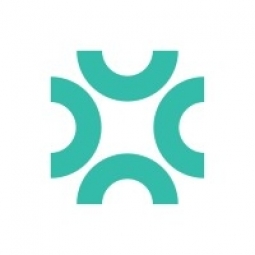Customer Company Size
Large Corporate
Region
- America
Country
- United States
Product
- Microsoft Dynamics GP
- Centage
Tech Stack
- Microsoft Dynamics GP
- Centage
Implementation Scale
- Enterprise-wide Deployment
Impact Metrics
- Productivity Improvements
- Cost Savings
Technology Category
- Functional Applications - Enterprise Resource Planning Systems (ERP)
Applicable Industries
- Healthcare & Hospitals
Applicable Functions
- Business Operation
Services
- Software Design & Engineering Services
About The Customer
Community Care, Inc. is a nonprofit organization based in Brookfield, Wisconsin. For over 35 years, it has been helping vulnerable elders and adults with disabilities live independently within their communities. The organization is a recognized managed care leader, offering a wide range of community-based long-term care and health services programs designed to optimize quality of life for members and maximize the allocation of available community resources. With 1,000 employees, including doctors, nurses, case managers, rehabilitation specialists, and other operational personnel, Community Care, Inc. is the exclusive organization in Wisconsin to offer each of the three long-term care programs of Program of All-Inclusive Care for the Elderly (PACE), Family Care, and Partnership.
The Challenge
Community Care, Inc., a nonprofit organization, was struggling with its budgeting process. Initially, they implemented an automated budgeting tool in 2004 to streamline financial activities. However, the software was not user-friendly enough for operations managers, leading to inaccurate budget updates and resistance to further training. The organization reverted to using Excel spreadsheets for budget management, with each department responsible for its own worksheet. This manual consolidation of information was laborious and did not guarantee accuracy. As the organization grew, this method became increasingly ineffective. When Director of Reimbursement & Financial Planning executive Kyle Raeder joined the company, he and Community Care, Inc.’s Chief Financial Officer Lawrence Paplham decided it was time to evaluate and deploy a more robust budgeting and forecasting tool.
The Solution
After an 18-month evaluation process, Community Care, Inc. selected Centage. The finance department, led by Raeder, uses Centage to provide the financial insight needed by their nonprofit organization. The software's flexibility allows Community Care, Inc. to better manage budget allocation activities, run cash flow projections, and instantly create a balance sheet that can be shared with the executive team. Additionally, the software's drill-down capabilities allow Raeder and his team to project staffing costs for their 1,000 employees with greater accuracy. As social security benefits and other government regulations change, the solution allows them to quickly run projections and determine how evolving expenses will impact the operational budget.
Operational Impact
Quantitative Benefit

Case Study missing?
Start adding your own!
Register with your work email and create a new case study profile for your business.
Related Case Studies.

Case Study
Hospital Inventory Management
The hospital supply chain team is responsible for ensuring that the right medical supplies are readily available to clinicians when and where needed, and to do so in the most efficient manner possible. However, many of the systems and processes in use at the cancer center for supply chain management were not best suited to support these goals. Barcoding technology, a commonly used method for inventory management of medical supplies, is labor intensive, time consuming, does not provide real-time visibility into inventory levels and can be prone to error. Consequently, the lack of accurate and real-time visibility into inventory levels across multiple supply rooms in multiple hospital facilities creates additional inefficiency in the system causing over-ordering, hoarding, and wasted supplies. Other sources of waste and cost were also identified as candidates for improvement. Existing systems and processes did not provide adequate security for high-cost inventory within the hospital, which was another driver of cost. A lack of visibility into expiration dates for supplies resulted in supplies being wasted due to past expiry dates. Storage of supplies was also a key consideration given the location of the cancer center’s facilities in a dense urban setting, where space is always at a premium. In order to address the challenges outlined above, the hospital sought a solution that would provide real-time inventory information with high levels of accuracy, reduce the level of manual effort required and enable data driven decision making to ensure that the right supplies were readily available to clinicians in the right location at the right time.

Case Study
Gas Pipeline Monitoring System for Hospitals
This system integrator focuses on providing centralized gas pipeline monitoring systems for hospitals. The service they provide makes it possible for hospitals to reduce both maintenance and labor costs. Since hospitals may not have an existing network suitable for this type of system, GPRS communication provides an easy and ready-to-use solution for remote, distributed monitoring systems System Requirements - GPRS communication - Seamless connection with SCADA software - Simple, front-end control capability - Expandable I/O channels - Combine AI, DI, and DO channels

Case Study
Driving Digital Transformations for Vitro Diagnostic Medical Devices
Diagnostic devices play a vital role in helping to improve healthcare delivery. In fact, an estimated 60 percent of the world’s medical decisions are made with support from in vitrodiagnostics (IVD) solutions, such as those provided by Roche Diagnostics, an industry leader. As the demand for medical diagnostic services grows rapidly in hospitals and clinics across China, so does the market for IVD solutions. In addition, the typically high cost of these diagnostic devices means that comprehensive post-sales services are needed. Wanteed to improve three portions of thr IVD:1. Remotely monitor and manage IVD devices as fixed assets.2. Optimizing device availability with predictive maintenance.3. Recommending the best IVD solution for a customer’s needs.

Case Study
HaemoCloud Global Blood Management System
1) Deliver a connected digital product system to protect and increase the differentiated value of Haemonetics blood and plasma solutions. 2) Improve patient outcomes by increasing the efficiency of blood supply flows. 3) Navigate and satisfy a complex web of global regulatory compliance requirements. 4) Reduce costly and labor-intensive maintenance procedures.

Case Study
Cloud-based healthcare solution for Royal Philips
Royal Philips wanted to launch its cloud-based healthcare solution HealthSuite Digital Platform in China to deliver services to help cope with challenges related to urbanization and population growth. Philips wanted to achieve this goal by combining mobile, cloud computing and big data technologies. To bring this platform and product to market, Philips required cloud computing and local technical service capabilities in China, in addition to a flexible IT infrastructure that could handle user requests.








